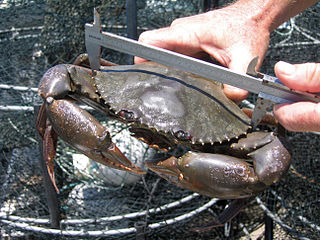
Abalone is a common name for any of a group of small to very large marine gastropod molluscs in the family Haliotidae. Other common names are ear shells, sea ears, and, rarely, muttonfish or muttonshells in parts of Australia, ormer in the UK, perlemoen in South Africa, and pāua in New Zealand. Abalones are marine snails. Their taxonomy puts them in the family Haliotidae, which contains only one genus, Haliotis, which once contained six subgenera. These subgenera have become alternative representations of Haliotis. The number of species recognized worldwide ranges between 30 and 130 with over 230 species-level taxa described. The most comprehensive treatment of the family considers 56 species valid, with 18 additional subspecies. The shells of abalones have a low, open spiral structure, and are characterized by several open respiratory pores in a row near the shell's outer edge. The thick inner layer of the shell is composed of nacre (mother-of-pearl), which in many species is highly iridescent, giving rise to a range of strong, changeable colors which make the shells attractive to humans as decorative objects, jewelry, and as a source of colorful mother-of-pearl. The flesh of abalones is widely considered to be a desirable food, and is consumed raw or cooked by a variety of cultures.
The European–African–Middle Eastern Campaign Medal is a military award of the United States Armed Forces which was first created on November 6, 1942, by Executive Order 9265 issued by President Franklin D. Roosevelt. The medal was intended to recognize those military service members who had performed military duty in the European Theater during the years of the Second World War.

Scylla serrata is an ecologically important species of crab found in the estuaries and mangroves of Africa, Australia, and Asia. In their most common forms, their shell colours vary from a deep, mottled green to very dark brown.

Jasus lalandii, the Cape rock lobster or West Coast rock lobster, is a species of spiny lobster found off the coast of Southern Africa. It is not known whom the specific epithet lalandii commemorates, although it may the French naturalist and taxonomer Pierre Antoine Delalande.

Perna perna, the brown mussel, is an economically important mussel, a bivalve mollusc belonging to the family Mytilidae. It is harvested as a food source but is also known to harbor toxins and cause damage to marine structures. It is native to the waters of Africa, Europe, and South America and was introduced in the waters of North America.
Daphnella recifensis is a species of sea snail, a marine gastropod mollusk in the family Raphitomidae.
Teretia acus is a species of sea snail, a marine gastropod mollusk in the family Raphitomidae.

Tritonoturris phaula is a species of sea snail, a marine gastropod mollusk in the family Raphitomidae.
Turris ambages is a species of sea snail, a marine gastropod mollusk in the family Turridae, the turrids.
Drillia diasi is a species of sea snail, a marine gastropod mollusk in the family Drilliidae.
Splendrillia falsa is a species of sea snail, a marine gastropod mollusk in the family Drilliidae.

Pupillaea aperta, common name the mantled keyhole limpet, is a species of sea snail, a marine gastropod mollusk in the family Fissurellidae, the keyhole limpets.

Dactylastele burnupi is a species of sea snail, a marine gastropod mollusk in the family Calliostomatidae.

Gibbula multicolor, common name the multicoloured topshell, is a species of sea snail, a marine gastropod mollusk in the family Trochidae, the top snails.

Oxystele sinensis, common name the pink-lipped topshell, is a species of sea snail, a marine gastropod mollusk in the family Trochidae, the top snails.
Turritella sanguinea is a species of sea snail, a marine gastropod mollusk in the family Turritellidae.

Neverita didyma, common name the bladder moon snail or moon shell, is a species of predatory sea snail, a marine gastropod mollusc in the family Naticidae, the moon snails.

Aulacomya atra, called also the Magellan mussel or the ribbed mussel, is a southern species of edible saltwater mussel, a marine bivalve mollusk in the family Mytilidae, the true mussels. Note that the common name ribbed mussel is also used of the Northern Hemisphere mussel Geukensia demissa.
Falsimargarita glaucophaos is a species of sea snail, a marine gastropod mollusk, in the family Calliostomatidae within the superfamily Trochoidea, the top snails, turban snails and their allies.
Azabbaremys is an extinct genus of bothremydid pleurodiran turtle that was discovered in the Teberemt Formation of Mali. It was described in 2001, based on a skull that had been recovered in an expedition in 1981. The genus consists solely of the type species Azabbaremys moragjonesi. The genus name is derived from Azabbar, a monster in Tamasheq folk stories. The species is named for Morag Jones, a research student who participated in the discovery of the specimen and died in the expedition. Azabbaremys is most closely related to another Paleocene side-necked turtle, Acleistochelys.










